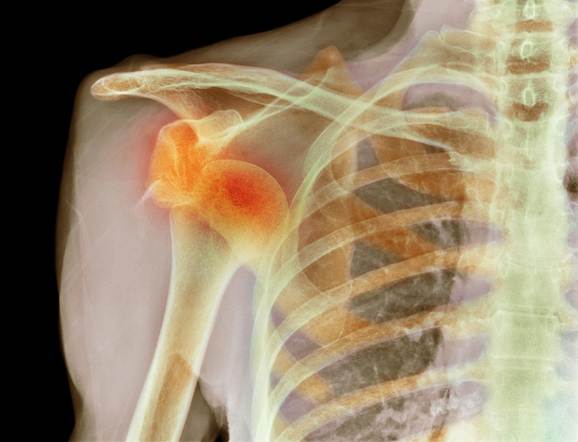A shoulder dislocation is a painful and urgent condition where the head of the upper arm bone (humerus) slips out of the shoulder socket (glenoid). As one of the most mobile joints in the body, the shoulder is also the most prone to dislocation. Recognizing the signs, taking quick action, and following proper treatment protocols are essential for a full recovery.
What Is a Shoulder Dislocation?
A shoulder dislocation occurs when the ball of the upper arm bone moves out of the shallow shoulder socket. It can be complete (fully out of place) or partial (subluxation). The dislocation can be:
- Anterior (forward) – Most common, usually caused by falling on an outstretched arm.
- Posterior (backward) – Less common, often due to seizures or electric shocks.
- Inferior (downward) – Very rare and usually occurs after severe trauma.
Common Causes
- Sports injuries (e.g., football, volleyball, skiing)
- Falls on an outstretched hand or shoulder
- Accidents involving trauma or impact
- Previous dislocations, making the shoulder unstable
- Congenital joint looseness or hypermobility
Symptoms of Shoulder Dislocation
- Sudden, intense pain in the shoulder
- Visible deformity — shoulder may look out of place
- Swelling and bruising
- Inability to move the arm
- Muscle spasms around the shoulder joint
- Tingling, weakness, or numbness in the arm or fingers (if nerves are affected)
What to Do Immediately After Dislocation
Step 1: Immobilize the Arm
Keep the arm in the position it was in after the injury. Do not try to move or relocate it yourself, as this may damage nerves or blood vessels.
Step 2: Apply Ice
Apply a cold pack to reduce pain and swelling. Wrap the ice in a cloth and apply for 15–20 minutes at a time.
Step 3: Seek Medical Help
Go to the emergency room or contact a doctor immediately. A trained professional will perform imaging (X-ray or MRI) and safely relocate the shoulder.
Medical Treatment
- Closed Reduction
- A non-surgical procedure where the doctor gently maneuvers the arm bone back into the socket.
- Pain usually improves immediately after relocation.
- Imaging Tests
- X-rays to confirm dislocation and rule out fractures.
- MRI to check for ligament, tendon, or labrum injuries.
- Immobilization
- A sling or shoulder immobilizer may be worn for 1–3 weeks to allow healing.
- Medications
- NSAIDs (like ibuprofen) or prescribed painkillers to manage discomfort.
Rehabilitation
Physical Therapy Begins After Immobilization Phase
A customized plan is vital to regain strength, motion, and stability:
- Phase 1: Gentle range-of-motion exercises
- Phase 2: Strengthening rotator cuff and shoulder muscles
- Phase 3: Functional training and prevention of future dislocations
Most people recover in 6–12 weeks, but full healing varies depending on age, severity, and treatment adherence.
When Is Surgery Needed?
Surgical repair may be considered in the following cases:
- Recurrent dislocations
- Significant ligament or labrum damage
- Involvement of bone fragments
- Young, active individuals involved in contact sports
Surgical procedures aim to tighten the joint capsule and reattach damaged tissues to improve long-term stability.
Complications If Left Untreated
- Chronic shoulder instability
- Increased risk of arthritis
- Nerve or blood vessel damage
- Decreased shoulder function
Prevention Tips for Future Dislocations
- Strengthen shoulder and back muscles through regular exercise
- Avoid activities that strain or overstretch the shoulder
- Wear protective gear while playing contact sports
- Practice good posture and safe lifting techniques
- Gradually return to sports after injury with guidance
Conclusion
A dislocated shoulder is a serious injury but is treatable with the right steps. Timely medical attention, proper rehabilitation, and preventive care can restore full function and reduce the chances of recurrence. If you’ve had a dislocation before, staying consistent with strengthening exercises is your best defense.
Disclaimer: This article is for educational purposes only. Please consult a healthcare professional for diagnosis and personalized medical treatment.
